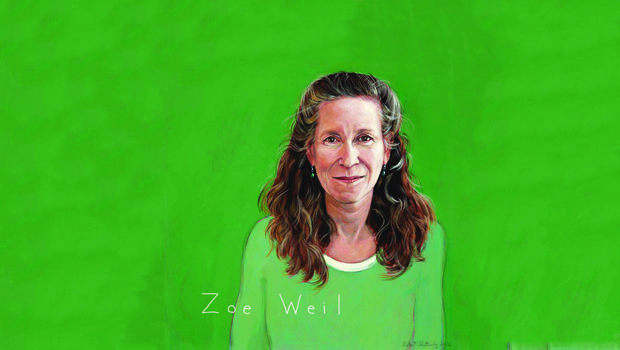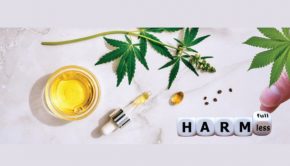The Next Level
We need to build cases for environmental protection around broad-based community concerns like health, quality of life, the protection of watersheds and wildlife and the education of our children. Environmental issues are also social, economic and quality of life issues. Our challenge is to bring life-sustaining principles into creative thinking for the long view, rather than the short term.
~ Terry Tempest Williams
Education for a More Sustainable World
“What is the purpose of education?” That’s a question Zoe Weil frequently revisits with her workshop audiences. As co-founder and President of the Institute for Humane Education (IHE), Weil has spent most of her adult life researching the answer. Her conclusion is that the U.S. Department of Education’s present goal of preparing graduates to “compete in the global economy” is far too myopic for our times.
Weil’s firsthand research, which grounds her book, The Power and Promise of Humane Education, has led her to forward the idea that the goal should be inspiring generations of “solutionaries” prepared to joyfully and enthusiastically meet the challenges of world problems.
“I believe that it is incredibly irresponsible for America’s educators and policymakers not to provide people with the knowledge of interconnected global issues, plus the skills and tools to become creative problem solvers and motivated change makers in whatever fields they pursue,” says Weil.
Weil points to four primary elements that comprise a humane education: providing information about current issues in age-appropriate ways; fostering the Three C’s of curiosity, creativity and critical thinking; instilling the Three R’s of reverence, respect and responsibility; and ensuring access to both positive choices and the necessary tools for problem solving. “These elements enable students to take all that they learn and use it with reverence and a sense of responsibility,” says Weil.
Her institute offers the only master’s degrees in humane education that this approach requires, with complementary in-class and online programs for young people and adults. Her determined vision is slowly becoming a reality as teachers become familiar with these concepts and integrate them into hands-on, project-based learning that crosses disciplines and better marries school experiences with real-life lessons.
Make the Extraordinary Ordinary
Massachusetts Institute of Technology’s Seymour Papert, a renowned educator and computer scientist, has conducted in-depth research in how worthy real-world topics get students excited about what they learn. They increase their tendency to dig more deeply and expand their interest in a wide array of subjects as they better retain what they learn, become more confident in trusting their own judgment and make the connections needed to broadly apply their knowledge. Young people learn how to collaborate and improve their social and group speaking skills, including with adults.
According to Papert, project-based learning improves test scores and reduces absenteeism and disciplinary problems. “If schoolchildren are given the gift of exploration, society will benefit, both in practical and theoretical ways,” notes Papert.
Telling Transformation
Papert’s observations were affirmed by middle school students at Voyagers’ Community School, in Farmingdale, New Jersey, in one of the IHE 10-week online classes—Most Good, Least Harm—in April 2012. “Initially, students were intimidated and underestimated their ability to express their thoughts and concerns or debate issues with the adult participants. That challenge faded quickly,” remarks Karen Giuffre, founder and director of the progressive day school.
Posing provocative questions like, “What brings you joy?” and engaging in conversations in subjects like climate change, racism, recycling, green energy, genocide and war challenged the students to step up to become respected equals. “This demanded a lot from these young people, because the experience wasn’t only about absorbing complex issues and developing an awareness of the material, political, economic and cultural world around them. It was also about how they probed their minds and emotions to determine where they stood on issues and what they could do to change their lifestyle, or that of their family and community, to make it more sustainable,” says Giuffre.
The students went on to help organize a peace conference that entailed 20-plus workshops to inspire an individual mindful awareness of peace that motivates and empowers the peacemaker within. It was intended to incite collective action across generations, explains Giuffre, and was followed by community service to people impacted by Hurricane Sandy.
Answering the Call
Children or adults that participate in activities such as those created by IHE or the National Association of Independent Schools (NAIS) Challenge 20/20 are developing what Peggy Holman describes as “change literacy”, the capacity to be effectively present amid a changing set of circumstances. Holman, an adjunct professi onal lecturer at American University’s School of Public Affairs, in Washington, D.C., is co-founder of the Open Space Institute-US, which fosters whole-system engagement, and author of Engaging Emergence.
“Conversational literacy—the capacity to talk and interact in creative ways with others that are very different from us—is our birthright. However, change literacy, a necessary skill for future leaders, is learned via curiosity,” advises Holman. “In my experience, children grasp it more quickly than adults, because authentic expression and curiosity come naturally to them. Children don’t have a long history, and so are naturally more present when engaged in exploring things that matter.”
Global problems of deforestation, peacekeeping, conflict prevention, terrorism, water pollution and shortages, natural disasters and mitigation, global warming, education for all, biodiversity, ecosystem losses and global infectious diseases aren’t yet subjects found in a normal curriculum for grades five through nine. However, the Internet-based Challenge 20/20 program now has youth in nearly 120 independent and traditional schools throughout the United States working on solutions that can be implemented both locally and globally.
“Challenge 20/20 partners American schools at any grade level [K-12] with counterpart schools in other countries, free of cost,” explains NAIS Director Patrick Bassett. “Together, teams tackle real global problems while forming authentic bonds and learning firsthand about cross-cultural communication.” Qualifying students may have an opportunity to share their experiences at the association’s annual Student Diversity Leadership Conference.
In 2010, 11 students at the Fay School, in Southborough, Massachusetts, partnered with Saigon South International School (SSIS), in Vietnam. After a year of studying, raising awareness and brainstorming solutions for the global water deficit, Fay students focused on the challenges families in underdeveloped countries face that must walk miles to find clean, safe, water sources.
A taxing water-carrying experiment brought immediate appreciation for the difficulty of transporting water, prompting them to invent the Water Walker. The modified rolling cooler with heavy-duty straps attached can carry up to 40 quarts of water on large, durable wheels and axles designed to navigate rocky terrain.
Re-Imagining Education
“Transformative learning, which is vital to the learning journey, goes beyond the acquisition of information,” says Aftab Omer, Ph.D., president of Meridian University, in Petaluma, California, and founder of its formative Institute of Imaginal Studies. “In informational learning, we acquire facts, concepts, principles and even skills, but in transformative learning, we are cultivating capacities. This is how certain capabilities become embodied in us, either as individuals or as human systems,” he advises.
Portrait artist Robert Shetterly tours with his series of more than 100 portrait paintings in traveling exhibits titled Americans Who Tell the Truth. They are helping individuals learn to embody patience, perseverance and compassion, while enhancing their understanding of sustainability, social justice, civic activism, democracy and civil rights, via both historical role models and contemporary mentors such as environmental activist Bill McKibben, conservationist Terry Tempest Williams and renowned climate scientist James Hansen.
“We don’t need to invent the wheel, because we have role models that have confronted these issues and left us a valuable legacy,” remarks Shetterly.
In 2004, he collaborated to produce a companion curriculum with Michele Hemenway, who continues to offer it in Louisville, Kentucky, elementary, middle and high schools. Hemenway also teaches Art in Education at Jefferson Community & Technical College and 21st-Century Civics at Bellamine University, both in Louisville.
Out of many, she shares a particularly compelling example of a student transformed due to this learning method: “I taught a young girl studying these true stories and portraits from the third through fifth grades when she took her place in a leadership group outside the classroom. Now in middle school, she is doing amazing things to make a difference in her community,” says Hemenway.
Reflecting on her own life, deciding what she cared about most and what actions she wanted to take, plus her own strengths, helped the student get a blighted building torn down, document and photograph neighborhood chemical dumping and have it stopped and succeed in establishing a community garden, a factor known to help reduce crime.
Among Shetterly’s collection is the portrait of John Hunter, a teacher in Charlottesville, Virginia, who devised the World Peace Game for his fourth grade students. Children learn to communicate, collaborate and take care of each other as they work to resolve the game’s conflicts. The game triggers an eight-week transformation of the children from students of a neighborhood public school to citizens of the world.
Demonstrating transformational learning at its best, they experience the connectedness of the global community through the lens of economic, social and environmental crises, as well as the imminent threat of war. Hunter and his students are now part of a new film, World Peace and Other 4th-Grade Achievements, which reveals how effective teaching can help unleash students’ full potential.
Professor Emeritus Peter Gray, of Boston College, who researches comparative, evolutionary, developmental and educational psychology, believes the transformational method will be accepted as part of the increased demand to integrate enlightened educational approaches in public schools. The author of Free to Learn notes, “A tipping point can occur. It’s happened before, when women won the right to vote, slavery was abolished and recently when gays were openly accepted in the military.”
Weil agrees that when more individuals commit to working toward a sustainable and just world, it will happen. “What’s more worthy of our lives than doing this work for our children and coming generations?” she queries. “How can we not do this for them if we love them?”




























